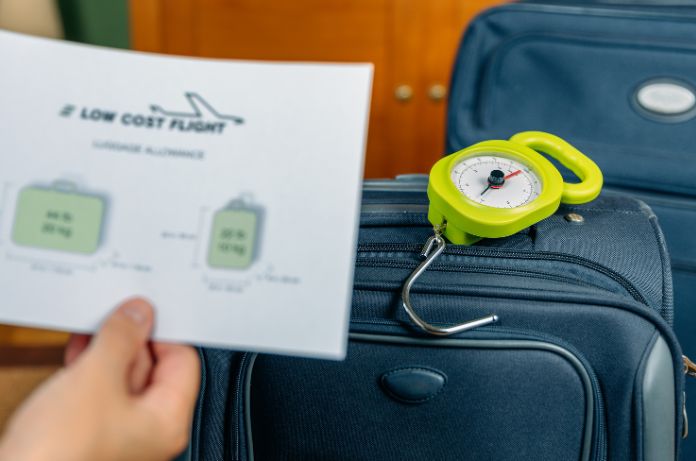Exercise bands, also known as resistance bands, are versatile, compact, and effective tools designed to enhance your workout experience. Used widely in physical therapy, strength training, and mobility routines, exercise bands offer a practical, portable, and adaptable way to build strength and flexibility. From beginners to advanced athletes, anyone can benefit from incorporating exercise bands into their fitness routines. In this guide, we’ll dive into the various types of exercise bands, their benefits, and specific exercises to maximize your results.
What Are Exercise Bands and Why Should You Use Them?
Exercise bands are elastic bands used to create resistance during exercises. Made from latex or rubber, these bands are categorized by their resistance levels, shapes, and sizes. They are an excellent alternative to traditional weights and machines, providing consistent tension throughout your workout.
Benefits of Exercise Bands
- Versatility: Exercise bands can be used for various exercises targeting different muscle groups, making them ideal for full-body workouts.
- Portable and Lightweight: Perfect for home workouts or traveling, exercise bands take up minimal space and are easy to carry.
- Variable Resistance Levels: Different colors and thicknesses provide varying resistance levels, catering to all fitness levels.
- Joint-Friendly: Exercise bands reduce the strain on joints compared to free weights, making them suitable for rehabilitation and low-impact exercises.
- Progressive Resistance: Unlike dumbbells, bands allow you to increase resistance gradually by simply adjusting your grip or using a thicker band.
Types of Exercise Bands
1. Loop Bands
Loop bands are circular bands, often used for lower body exercises such as squats, leg lifts, and glute bridges. Available in different resistance levels, loop bands are ideal for targeting muscles in the hips, legs, and glutes.
2. Therapy Bands
Therapy bands are flat, non-looped bands commonly used in physical therapy and rehabilitation settings. They offer gentle resistance and are suitable for people recovering from injuries or those who require a more controlled resistance.
3. Tube Bands with Handles
These bands have handles at both ends, making them perfect for upper-body workouts like chest presses, rows, and shoulder exercises. Tube bands with handles mimic the movement of free weights and are effective for building muscle strength.
4. Figure-8 Bands
Figure-8 bands are shaped like the number eight and come with two handles. They are primarily used for upper body workouts, such as arm and chest exercises, offering a concentrated resistance range.
5. Pull-Up Bands
Pull-up bands are long, looped bands that provide high resistance and are used to assist with pull-ups and other bodyweight exercises. They are particularly beneficial for those who are working on their pull-up strength.
Choosing the Right Exercise Band for Your Fitness Level
Choosing the right exercise band depends on your current strength, fitness goals, and the types of exercises you plan to perform. Generally, lighter bands are suitable for beginners and rehabilitation exercises, while heavier bands are ideal for strength training and advanced movements.
Resistance Levels and Color Codes
Resistance bands often come in color-coded resistance levels, though these codes can vary by brand. Typically, the progression follows:
- Yellow or Light: For beginners, physical therapy, or rehabilitation exercises
- Green or Medium: Suitable for intermediate users, ideal for toning and endurance
- Blue or Heavy: Good for advanced users or those focusing on muscle building
- Black or Extra Heavy: For experienced athletes and intense strength training sessions
Effective Workouts with Exercise Bands
1. Lower Body Workout
a. Banded Squats
- How to Perform: Place a loop band around your thighs, above the knees. Stand with feet shoulder-width apart and squat down, keeping your knees aligned with your toes.
- Benefits: Engages the glutes, hamstrings, and quadriceps while providing resistance, making the movement more challenging and effective.
b. Glute Bridges
- How to Perform: Lie on your back with knees bent and place a loop band above your knees. Push through your heels to lift your hips off the ground.
- Benefits: Targets the glutes and hamstrings, improving lower body strength and stability.
c. Lateral Band Walks
- How to Perform: Place a loop band around your ankles, bend your knees slightly, and take small steps to the side, keeping constant tension on the band.
- Benefits: Strengthens the glutes and hips, improving balance and lower body stability.
2. Upper Body Workout
a. Banded Chest Press
- How to Perform: Attach a resistance band to a sturdy surface, stand with your back to the anchor point, and hold the handles at shoulder level. Press forward until your arms are fully extended.
- Benefits: Strengthens the chest, shoulders, and triceps, mimicking the movement of a traditional bench press.
b. Seated Row
- How to Perform: Sit with your legs extended and loop a band around your feet. Pull the band handles towards your torso, keeping your back straight.
- Benefits: Works the back muscles, including the lats and rhomboids, essential for posture and upper body strength.
c. Bicep Curls
- How to Perform: Stand on the middle of the band, holding the handles with palms facing upward. Curl the handles towards your shoulders.
- Benefits: Isolates and strengthens the biceps, providing resistance without the need for dumbbells.
3. Core Workout
a. Russian Twists
- How to Perform: Sit on the ground with your knees bent, holding the resistance band with both hands. Twist your torso from side to side, keeping tension on the band.
- Benefits: Engages the core muscles, specifically the obliques, for a toned and stable midsection.
b. Bicycle Crunches with Resistance Band
- How to Perform: Lie on your back with the band looped around your feet. Bring your opposite elbow towards your knee in a bicycle motion.
- Benefits: Targets the entire core, enhancing stability and endurance.
4. Full-Body Workout
a. Deadlifts with Resistance Bands
- How to Perform: Stand on the band, holding the handles with both hands. Hinge at the hips, lower your torso, and pull up to a standing position.
- Benefits: Works the glutes, hamstrings, and lower back, providing a powerful full-body workout.
b. Band-Assisted Pull-Ups
- How to Perform: Secure a pull-up band to the bar and place one foot in the band. Perform a pull-up with assistance from the band.
- Benefits: Helps build upper body strength and aids those working towards an unassisted pull-up.
Incorporating Exercise Bands into Your Fitness Routine
Exercise bands can be used as stand-alone equipment or as an addition to your regular workouts. Here are a few ways to incorporate them effectively:
- Warm-Up: Use light resistance bands to activate muscles before starting a weightlifting session or cardio workout.
- Supersets: Perform band exercises as supersets to increase muscle fatigue and intensity.
- Travel-Friendly Workout: When traveling, exercise bands can replace weights, allowing you to maintain your workout regimen on the go.
Maintenance and Care Tips for Exercise Bands
To prolong the life of your bands, follow these care tips:
- Store Properly: Keep them out of direct sunlight and extreme temperatures, as heat can weaken the material.
- Avoid Sharp Objects: Inspect the surface area before use, as bands can easily tear if they come in contact with sharp objects.
- Clean Regularly: Wipe the bands with a damp cloth to remove sweat and dirt, preserving their elasticity and durability.
Conclusion
Exercise bands are invaluable fitness tools for anyone looking to improve strength, flexibility, and mobility. They are adaptable, portable, and accessible to users of all fitness levels. Incorporating exercise bands into your routine can add variety, challenge your muscles in new ways, and help you achieve your fitness goals.



